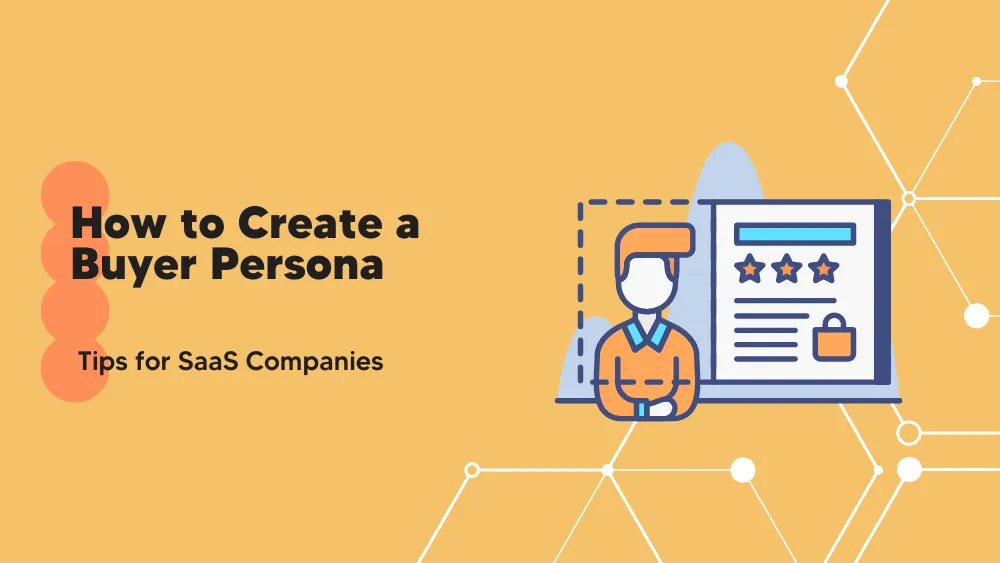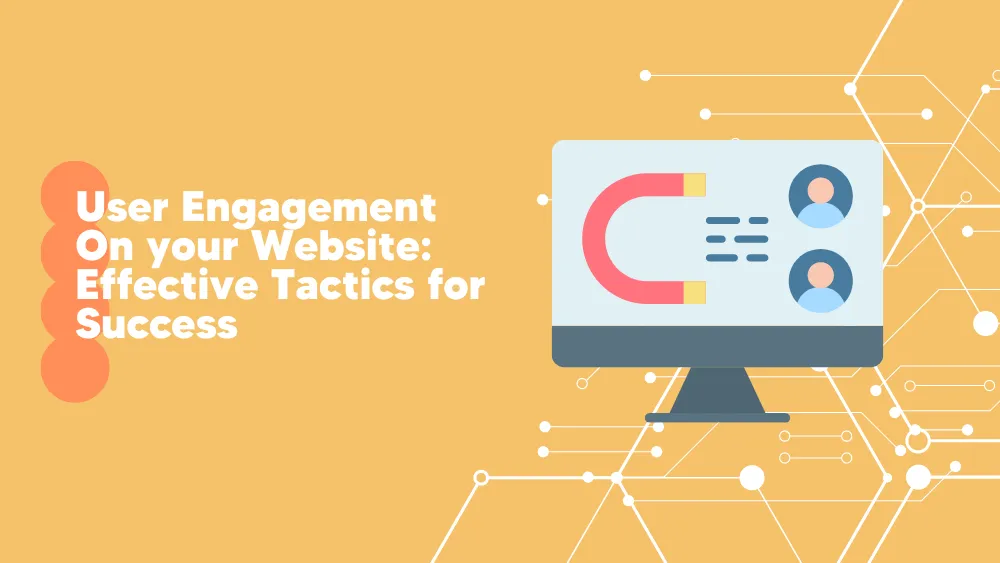A mysterious yet crucial entity is the ‘buyer persona’ in the bustling, fast-paced universe of SaaS marketing. To the uninitiated, it may seem like a throwback to a high school drama class or perhaps even some new corporate jargon. However, the significance of the buyer persona extends far beyond a simple buzzword. It stands as a beacon, a cardinal compass guiding SaaS companies toward meaningful customer engagement, successful sales strategies, and, not insignificantly, outstanding subscription success.
Imagine the scenario of throwing a party. Is it preferable to invite a group of random strangers off the street or to carefully curate the guest list based on mutual interests, tastes, and compatibility? Undoubtedly, in most cases, it is the latter. Now apply the same thought to a SaaS company.
Understanding the audience’s core – their preferences, challenges, and goals – helps provide solutions that resonate personally. This empathetic approach can lead to the transformation of simple users into loyal customers and customers into ardent advocates. The key to this transformation lies in creating and understanding the buyer persona. This exploration becomes a journey worth undertaking for those seeking to elevate their customer engagement and retention rates.
What is a Buyer Persona?
Picture a ‘buyer persona’ as the representation of your ideal customers. It’s a rich, in-depth profile that stitches together demographic details, behavior patterns, underlying motivations, and distinct goals. It’s not merely about listing customer preferences but delving into the ‘whys’ behind their choices and understanding their decision-making framework.
When a company has a well-sketched customer persona in its toolkit, it can fine-tune its offerings and communication strategies with laser precision. There’s no room for guesswork or broad-stroke approaches here. Instead, it’s about delivering experiences that tick all the right boxes for each customer – hitting their specific needs, aligning with their preferences, and exceeding their expectations.
The buyer persona’s influence permeates various business aspects, from product development and sales tactics to crafting engaging content. It’s the directional compass guiding a SaaS company’s journey to transforming happy customers into passionate brand ambassadors. It isn’t just a marketing gimmick but a powerful catalyst for customer satisfaction and sustained business growth.
Benefits of creating a Buyer Persona
-
Improved Targeting
The first notable benefit of a well-defined customer persona is the ability to target customers that you should want to target. With a precise depiction of the ideal customer, companies can channel their resources effectively, focusing on the audience that is genuinely interested in their product. This eliminates guesswork, optimizes marketing efforts, and increases the chances of acquiring leads that convert.
-
Higher Conversion Rates
With the insights that a well-defined buyer persona provides, businesses are in a prime position to boost their conversion rates. Tailoring the messaging and user experiences to fit the unique needs and preferences of the potential customers increases resonance with the audience. This heightened level of personalization can convert prospects into paying users at a significantly faster rate.
-
Effective Communication
Finally, the detailed buyer persona is critical in enhancing communication effectiveness. With a clear understanding of the customer’s preferred communication channels, their unique language, and their deeply held values, businesses can foster more meaningful interactions. This personalized engagement paves the way for long-term customer relationships beyond single transactions, fostering trust and loyalty.
-
Streamlined Product Development
The clarity it provides for product development is not to be forgotten. Knowing the challenges, needs, and preferences of the ideal customer can help shape the features and functionalities of the product. This ensures that the solutions are aligned with the customer’s requirements, enhancing the product’s appeal and market fit.
-
Personalized Customer Service
Customer service is quite important in the SaaS industry. With the help of a detailed buyer persona, customer service can be personalized to meet the specific needs and expectations of the customer. This can increase customer satisfaction, better reviews, and higher retention rates.
Understanding Your Ideal Customer
Before the construction of a buyer persona, there’s an essential groundwork that needs to be laid – understanding the ideal customer. It’s akin to knowing the destination before setting out on a journey. Without a clear picture of the ideal customer, the buyer persona could be a vague, inaccurate construct that does little to guide marketing efforts or business decisions.
So, how can businesses gather this information? Here are some tips:
- Analyze Customer Data – Digging into existing customer data can yield a wealth of insights. Purchase history, customer feedback, and user behavior on the product can provide valuable information about customers’ preferences, their pain points, and how they interact with the product.
- Conduct Surveys or Interviews – Directly engaging with customers through surveys or interviews can offer a more in-depth understanding. Open-ended questions about their experiences, needs, and preferences can help uncover insights that may not be apparent in quantitative data.
- Study Competitor Behavior – Observing the competition is another way to gather insights. How are competitors positioning their products? What kind of customers are they attracting? This information can shed light on potential gaps in the market and reveal opportunities to distinguish the product.
Creating Your Buyer Persona
Creating a buyer persona is much like assembling a puzzle, each representing a key aspect of the ideal customer. Collectively, these pieces form a complete, insightful picture of the customer. Let’s take a look at these crucial components:
Demographics
Demographics form the most basic layer of a buyer persona, the surface-level information that helps define the customer. This includes factual data such as:
- Age
- Gender
- Location
- Education level
- Occupation
- Income level
- Job title or role
- Industry or sector
- Company size
- Company location
Understanding demographics can influence purchasing behavior, product usage, communication preferences, and more. For example, a SaaS tool aimed at large corporations must account for different factors than one aimed at small businesses or individual users.
Psychographics
While demographics tell us ‘who’ the customer is, psychographics delves into ‘why’ they behave the way they do. This includes:
- Interests
- Attitudes
- Values
- Lifestyle
- Personality traits
For instance, does the ideal customer value speed and efficiency? Or are they more concerned with detailed analysis and precision? Such insights can influence how a SaaS product is designed, marketed, and supported.
Pain Points
Every product or service aims to solve problems or fulfill customers’ needs. Pain points are these problems or challenge the ideal customer is trying to solve. They could be:
- Operational inefficiencies
- Lack of suitable tools
- Difficulty in managing teams
- Challenges in data analysis or reporting
Goals
Finally, goals are the outcomes or objectives the customer hopes to achieve. They could be related to their personal life, professional role, or the organization they work for. For instance:
- Increase team productivity
- Improve project delivery timelines
- Enhance communication and collaboration
- Achieve better work-life balance
To put these components together, a framework or template can be useful. Here’s a basic template:
Name: Give your persona a name for easy reference.
Demographics: List the demographic characteristics.
Psychographics: Detail the customer’s attitudes, interests, and values.
Pain Points: Describe the challenges that this persona faces.
Goals: Enumerate the goals this persona wants to achieve.
However, templates beyond this base allow you to create profiles that fully make the buyers come to life, including details such as bios and quotes. Let’s illustrate with an example of a buyer persona for a B2B SaaS company offering project management solutions:
Name: Project Manager Pete
Demographics: Male, 35 years old, lives in Seattle, Bachelor’s degree in Business Administration, Project Manager at a medium-sized tech company
Psychographics: Values efficiency, enjoys using technology to streamline processes, keen on continuous learning and professional development
Pain Points: Struggling with coordinating remote teams, difficulty in tracking project progress, inefficient communication among team members
Goals: Wants to improve team coordination, desires efficient tracking of project milestones, aims for better communication within the team
Using Your Buyer Persona
We already have a buyer persona, and that’s great, but now a different question forms – what now? The next step is to use it and shape marketing and sales strategies. Here’s how this can be done, step by step:
-
Informing Marketing Strategies
A well-crafted buyer persona can form the bedrock of a targeted marketing strategy. For instance, if the buyer persona shows that the ideal customer spends a lot of time on LinkedIn, it might make sense to prioritize LinkedIn for advertising and content promotion. Also, the persona can guide the creation of targeted ads. If ‘Project Manager Pete’ values efficiency and is struggling with coordinating remote teams, an ad could highlight how the SaaS tool simplifies project management and enhances team collaboration.
-
Tailoring Messaging and Content
With a clear understanding of the customer’s pain points and goals, messaging, and content can be tailored to resonate with the target audience. Blog posts, guides, and tutorials can address the customer’s specific challenges.
Continuing with the ‘Project Manager Pete’ example, a blog post could offer tips for managing remote teams effectively, or a tutorial could demonstrate how the SaaS tool’s features facilitate efficient project tracking.
-
Guiding Sales Strategies
In the world of sales, understanding the customer is critical. A buyer persona can help sales teams to anticipate the needs, questions, and objections of prospective customers, enabling them to handle sales conversations more effectively. For instance, if a prospective customer fits the ‘Project Manager Pete’ persona, the sales rep could emphasize how the product boosts team coordination and project tracking efficiency, directly addressing Pete’s primary concerns.
-
Driving Product Development
Finally, buyer personas can inform product development, guiding the creation of features that align with customer goals. If ‘Project Manager Pete aims to improve communication within his team, the company could consider developing features that enable more seamless communication within the product.
Tools to use for creating your buyer persona
Creating a buyer persona doesn’t need to be a daunting task. Aside from great templates, the internet provides us with many innovative tools, thanks to which the process becomes much more tolerable. Let’s have a look at some of them:
-
UserForge
UserForge helps teams create and share user personas. The tool aims to improve collaboration in persona creation and use. It’s ideal for larger teams or organizations where multiple departments may need to access and use the buyer personas.
-
SurveyMonkey
While not a persona-creation tool per se, SurveyMonkey can be an invaluable resource in gathering the data needed to build a persona. This online survey tool lets you ask your existing customers about their needs, preferences, behaviors, and more, gathering the raw data that can be analyzed and transformed into a detailed buyer persona.
-
Google Analytics
While not designed specifically for persona creation, Google Analytics is another tool that provides a wealth of customer data. By analyzing metrics such as user demographics, interests, behavior, and geographical location, businesses can gain valuable insights that inform the development of their buyer personas.
Conclusion
In closing, creating and using a buyer persona is a practical, data-driven process crucial for all kinds of companies. This detailed profile of a fake customer made up of real demographics, psychographics, pain points, and goals enables businesses to target their product, service, and communication strategies more effectively. The result? Improved conversion rates, more personalized service, and ultimately, growth and success in the competitive SaaS industry.







